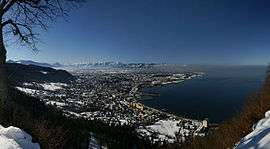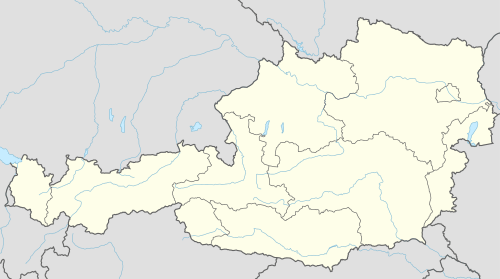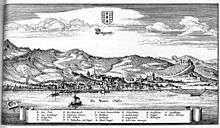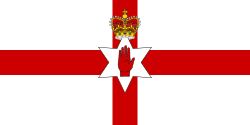Bregenz
| Bregenz | ||
|---|---|---|
 | ||
| ||
 Bregenz Location within Austria | ||
Location in the district
| ||
| Coordinates: 47°30′18″N 09°44′57″E / 47.50500°N 9.74917°ECoordinates: 47°30′18″N 09°44′57″E / 47.50500°N 9.74917°E | ||
| Country | Austria | |
| State | Vorarlberg | |
| District | Bregenz | |
| Government | ||
| • Mayor | Markus Linhart (ÖVP) | |
| Area | ||
| • Total | 29.51 km2 (11.39 sq mi) | |
| Elevation | 427 m (1,401 ft) | |
| Population (1 January 2016)[1] | ||
| • Total | 29,139 | |
| • Density | 990/km2 (2,600/sq mi) | |
| Time zone | CET (UTC+1) | |
| • Summer (DST) | CEST (UTC+2) | |
| Postal code | 6900 | |
| Area code | 05574 | |
| Vehicle registration | B | |
| Website | www.bregenz.at | |
Bregenz (German pronunciation: [ˈbʁeːgɛnt͡s]) is the capital of Vorarlberg, the westernmost federal state of Austria. The city is located on the eastern shores of Lake Constance, the third-largest freshwater lake in Central Europe, between Switzerland in the west and Germany in the northwest.
The city is situated on a plateau falling in a series of terraces to the lake at the foot of Pfänder mountain. It is a junction of the arterial roads from the Rhine valley to the German Alpine foothills, with cruise ship services on Lake Constance.
It is especially famous for the annual summer music festival Bregenzer Festspiele.
History

The first settlements date from 1500 BC. Celtic tribe named Brigantii is mentioned by Strabo as a sub-tribe in these region of the Alps.[2] In the 5th century BC, the Celts settled at Brigantion, which was one of their most heavily fortified locations. After battles in 15 BC, the Romans conquered Brigantion and the city became a Roman camp. It was conferred the status of a municipality (Brigantium) around 50 AD and was the seat of the Roman admiralty for Lake Constance. In 259/60 Brigantium was destroyed by the Alemanni, a Germanic people who settled in the area in around 450.
From 610 to 612 St. Columbanus and Saint Gall worked as missionaries in Bregenz. From 917 the castle served as a residence of the Udalrichinger (ruling dynasty of Vorarlberg), who called themselves Counts of Bregenz. The house died out around 1150. The son of the first Ulrich was Saint Gebhard, born in 947. He became Bishop of Konstanz and was later known as the patron of the pregnant women. In around 1170 Hugo of Tübingen (Montfort) founded a town settlement (first documented mention in 1249), enlarged in the 13th and 14th century and from 1650 to 1652.[3]
The city was sold in 1451 and in 1523 to the Habsburgs and continued under Austrian rule, with a brief occupation by Swedish forces under Carl Gustaf Wrangel during the 30 Years' War, until the 19th century. Bregenz was under Bavarian rule from 1805 to 1814. From 1842 to 1850, the harbour on Lake Constance was built. In 1883 and from 1889–1891 the harbour was enlarged, and Austrian ship service was set up in 1884. Rail communication has existed since 1872 and since 1884 across the Arlberg massif. Since then, the town has extended to the surrounding countryside. Since 1726, Bregenz has been the main seat of Austrian administration in Vorarlberg (Obervogtei, in 1786 Kreisamt, since 1861 seat of the Landtag, since 1918 seat of the Landeshauptmann). Rieden-Vorkloster and Fluh were incorporated into Bregenz in 1919 and in 1946, respectively. The town was bombarded in 1945, and 72 houses were destroyed.
| Largest groups of foreign residents[4] | |
| Nationality | Population |
|---|---|
| 1,329 | |
| 1,035 | |
| 422 | |
| 396 | |
| 223 | |
Population

Sights
Landmarks buildings of Bregenz include Martins Tower, St. Gallus Church, the Art House, the Post Office Building, and the Lake Promenade. A well known meeting point for local philosophers, politicians, writers and musicians.
Upper town: (oldest part, remains from the 13th and 16th centuries, town walls still standing), old town hall (1662); the Martinsturm is considered the landmark of Bregenz (late Roman core, chapel with frescos from 1362, from 1599 to 1601 a storey was added, biggest Baroque bulb-shaped steeple in Central Europe, houses the Museum of Military History); Gothic parish church of St. Gall (the Roman-Romanesque foundations date from before 1380, rebuilt around 1480, from 1737 to 1938 altered by F. A. Beer in Baroque style); Herz-Jesu parish church (1905–1908).
Lower town: town hall built in 1686 (façade from 1898) Gothic Seekapelle, Landhaus (built from 1973 to 1982 by W. Holzbauer), the former Kornhausmarkt (built from 1838 to 1940, altered from 1951 to 1955) now houses a theatre, Protestant church of the Sacred Cross (1862–1864), Parish church, church of St. Kolumban (1962–1966), Kunsthaus Bregenz (1991–1997), Tourismushaus tourist centre (1994–1998). District of Vorkloster: Maria Hilf parish church (1925–1931, C. Holzmeister, interior from 1980) and Cistercian monastery of Mehrerau. On the Gebhardsberg rock, remains of the fortress of Hohenbregenz (destroyed by the Swedes in 1647).
 The Pfänder, a famous lookout point of Bregenz
The Pfänder, a famous lookout point of Bregenz- The Martinsturm was built in 1601
- Congress and Culture Center
- Sacred Heart Church in Bregenz
 Ancient city wall, upper town.
Ancient city wall, upper town.
Businesses and services
- Government: Bregenz is the seat of the Vorarlberg provincial government (Landtag), home of most provincial authorities (e.g. school supervisor, police headquarters), department of human resources development (AMS), the police headquarters for the province of Vorarlberg, Office for Environmental Protection, Chamber of Labour, Economics Chamber, Chamber of Agriculture, Chamber of Pharmacists, military regional headquarters, military garrison, one of the main hospitals of the province (Landeskrankenhaus) as well as a sanatorium, farmers' health and social insurance office, VLV (Mutual Fire Insurance Institute).
- Consulates: A consulate-general of Turkey,[5] and honorary consulates of Belarus, France, Germany, Hungary, Norway, and Switzerland are located in Bregenz. Honorary consulates of Finland, and the United Kingdom are located in nearby Lauterach, an honorary consulate of Brazil in nearby Hard.[6]
- Schools and the arts: Four Gymnasium secondary schools, commercial college (HAK), technical college (HTL), upper secondary business schools (Höhere Lehranstalt für wirtschaftliche Berufe), three Berufsschulen vocational schools, crafts colleges, Academy of Social Sciences, nursing school; adult education centre, school boarding houses, provincial archives, provincial library, provincial museum, Kunsthaus Bregenz (modern arts centre), Künstlerhaus art centre, Thurn und Taxis Palace, five monasteries, Heimatwerk (autonomous institution fostering the manufacturing of traditional craft products, etc.), various newspapers.
- Public facilities: Festival and Congress centre, Theater am Kornmarkt, casino, harbour for sailing boats and yachts, cable car up the Pfänder mountain.
- Economic structure: 14,769 employed people in 1991. It is mainly dominated by small businesses in the service, trade and industry sectors: textile industry (Wolford AG), iron-fittings manufacturer (Julius Blum GmbH), glass processing and machine construction. The airline InterSky, which was the biggest privately owned Airline in Austria, had its headquarters in Bregenz. Bi-seasonal tourism, a major attraction is the Bregenz Festival (since 1946, floating stage since 1949, modernised in 1979, Festival and Congress Hall in 1980), winter sports at the Pfänder mountain.
| Bregenz | ||||||||||||||||||||||||||||||||||||||||||||||||||||||||||||
|---|---|---|---|---|---|---|---|---|---|---|---|---|---|---|---|---|---|---|---|---|---|---|---|---|---|---|---|---|---|---|---|---|---|---|---|---|---|---|---|---|---|---|---|---|---|---|---|---|---|---|---|---|---|---|---|---|---|---|---|---|
| Climate chart (explanation) | ||||||||||||||||||||||||||||||||||||||||||||||||||||||||||||
| ||||||||||||||||||||||||||||||||||||||||||||||||||||||||||||
| ||||||||||||||||||||||||||||||||||||||||||||||||||||||||||||
Culture
The annual summer music festival Bregenzer Festspiele is a world-famous festival which takes place on and around a stage on Lake Constance, where a different opera is performed every second year during summer (July and August). In 2016 the main opera performed is Turandot by Giacomo Puccini.
Sport
- A1 Bregenz HB is a handball team.
- SC Bregenz is the football team of the town, competing in the Austrian Regional League (Third Division).
Notable people
- Irmfried Eberl (1910–1948), psychiatrist; 1942 commander of Treblinka extermination camp
- Lorenz Bohler, surgeon and member of Nazi Party
- Hans-Peter Martin, member of the European Parliament
- Sieghardt Rupp (born 1931), actor
- Stefan Sagmeister, graphic designer
- Karl Michael Vogler, actor (Patton) - was raised in Bregenz
- İlber Ortaylı (born 1947), Turkish historian - was born in Bregenz
- Max Sick (1882–1961), strongman
- Candy Ken, rapper
Twin towns
Bregenz is twinned with:
 Bangor, County Down, Northern Ireland, United Kingdom – various exchange trips take place between the two places
Bangor, County Down, Northern Ireland, United Kingdom – various exchange trips take place between the two places Acre, Israel
Acre, Israel
Notes and references
- ↑ Statistik Austria - Bevölkerung zu Jahresbeginn 2002-2016 nach Gemeinden (Gebietsstand 2016-01-01), 2016-01-01.
- ↑ Strabo, Geographia Book IV Chap. 6
- ↑ B. Bilgeri, Bregenz, Geschichte der Stadt, Bd. 1, Wien-München, 1980
- ↑ "Ergebnisse der Registerzählung 2011". Statistik - Landesstatistik Vorarlberg. Retrieved 2014-09-26.
- ↑ "Türkiye Cumhuriyeti Bregenz Başkonsolosluğu". Bregenz.bk.mfa.gov.tr. 2013-02-25. Retrieved 2013-03-26.
- ↑ "Foreign representations in Austria". Federal Ministry for European and International Affairs (Austria). Retrieved 27 January 2009.
External links
| Wikimedia Commons has media related to Bregenz. |
| Wikisource has the text of the 1911 Encyclopædia Britannica article Bregenz. |
| Wikivoyage has a travel guide for Bregenz. |
- http://www.fw.bregenz.at/vkl[] Official site in German
- http://www.bregenz.at Official site (in German)
- http://www.pfaender.at Official site (German/English/Italiano/Francais) of the Pfänder Mountain
- http://www.pfaenderbahn.at (in German)
- http://www.scbregenz.at Official site (in German) of local Football Club
- Bregenzer Festspiele/ Bregenze Festival website
- Bregenz Tourism Information

